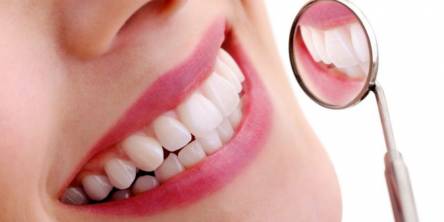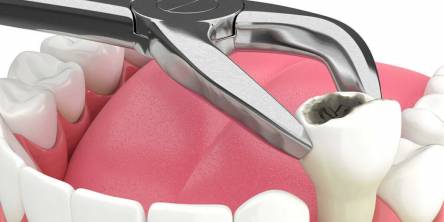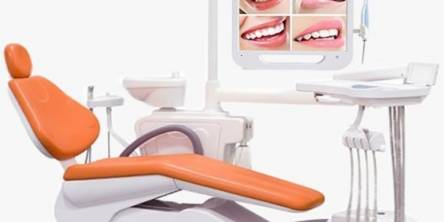Invisalign Trays: Top Cleaning Practices

The results of wearing Invisalign aligners look stunning, and they are way more convenient than traditional braces. However, no one speaks about what it feels like to wear the same pair of traces around 22 hours a day. We’re not robots: we eat and drink throughout the day. Despite thorough oral hygiene, Invisalign trays can have plaque, stains, and occasional food particles inside.
We’ll tell you how to clean them correctly to enjoy wearing your aligners throughout the entire Invisalign treatment. Numerous homemade tips wander around the Web, but beware not to spoil your dental investment!
2 Safe Cleaning Methods
Consider cleaning your Invisalign trays as part of your oral hygiene routine: when you brush your teeth, it’s time to clean your aligners. The treatment involves switching to a new pair of trays every couple of weeks, but if you skip cleaning, they will become dirty and have a nasty odor. First, let’s see what cleaning solution the manufacturer recommends.
1. Invisalign Cleaning Crystals
This set of fifty miraculous packets is aimed at keeping aligners clear, odorless, and hygienic. It works quickly and effectively: in about fifteen minutes, you’ll get a sanitized pair of Invisalign trays. Follow our brief guidelines:
-
Rinse your aligners under lukewarm water. Never use hot water: it can damage and deform your trays!
-
Place them into a container or bowl and fill it with water.
-
Add the contents of one packet and gently shake the container for nearly 20 seconds.
-
Let your aligners soak for about 15 minutes, and shake them gently for 20 seconds.
-
Rinse your Invisalign trays.
This is the safest method to keep your aligners clean since it was designed for this purpose. It might seem costly, but this set is meant for a 50-week supply. Now, let’s proceed to a more affordable option.
2. Toothbrush and Toothpaste
You might have heard that toothpaste can damage your aligners and leave scratches on them. Let’s keep a cool head and visit the manufacturer’s website. The producer recommends using “a soft bristle toothbrush with water and a small amount of toothpaste.” The cleaning technique is very convenient:
-
Brush your aligners while they are still on your teeth — this way, you’ll clean the outside surface.
-
Remove the aligners and clean the insides with a tiny amount of toothpaste and a soft-bristled toothbrush.
Except for the designated “Invisalign Cleaning Crystals” and a “toothbrush-toothpaste” combo, the Invisalign brand gives no other prescriptions on how to clean your trays to freshen their look. We would rather stick to these prompts and not try fate and invent other cleaning methods that can appear harmful. Let’s discover which things to avoid so as not to throw your Invisalign trays into a dustbin.
“Granny’s Methods” to Avoid
Sometimes, in the pursuit of cleaning solutions that are currently at hand, you might negatively affect your aligners’ efficiency.
1. Baking Soda
Using baking soda to clean your Invisalign trays is a method with no safeguards: you risk damaging the plastic if something goes wrong. Soda is alkaline, which can harm the aligners’ functionality. Considering that Invisalign cost is comparable to braces, we wouldn't put it at stake for a sprinkling of white abrasive powder. But the choice is always yours.
2. White Vinegar
Some Web advisers recommend mixing vinegar with water in a proportion of 1:1 and letting your aligners soak in this acidic solution for 15 minutes. Then you should brush the trays with a soft toothbrush and rinse them in lukewarm water.
However, we aren’t on their side. Though vinegar is claimed to be an effective disinfectant, its pH level is about 2.4, making it quite acidic. The wrong proportion — and your aligners risk deformation, which is definitely a “no” considering their price.
3. Hydrogen Peroxide
Perhaps, using 3% hydrogen peroxide to clean aligners sates a latent alchemist inside us. Otherwise, the urge to mix equal parts hydrogen peroxide with warm water might seem incomprehensible. “Grannies” on the Web advise soaking aligners in the solution for half an hour, brushing, and rinsing them.
However, if hydrogen peroxide is more than 3%, such a high concentration can irritate soft tissues in your oral cavity. Even if you don’t have “Invisalign Cleaning Crystals” at home, it’s better to clean the trays with a soft-bristled toothbrush and toothpaste than risk the results of your treatment.
Safe Cleaning Methods — Successful Results
There are no limits to human curiosity and creativity, but in certain cases, it’s better to stick to safe established methods to get brilliant, stable results. Invisalign treatment isn’t cheap, and scratching your aligners with baking soda is an orthodontist's nightmare.
If you have questions, visit the Vip Dental Care website for professional advice on caring about your aligners. Remember, one innocent experiment with “granny’s method” can spoil your precise medical tools. Prioritize your sanity and oral health when choosing the appropriate cleaning method for your aligners.
Similar Articles
Temporomandibular Joint Disorder, commonly known as TMJ, is a condition that causes pain and dysfunction in the jaw joint and surrounding muscles. This disorder can arise from various factors, including teeth grinding, arthritis, jaw injuries, poor posture, or stress.
A root canal is a common treatment that people pay the dentist a visit for. According to a study, root canal treatment claims were up by 42% in the last five years.
Family dentistry isn’t just about teeth—it’s about bringing convenience, care, and a few laughs to your household’s dental game. Think of a family dentist as the Swiss Army knife of oral healthcare, equipped to handle everything from baby teeth to grandma’s bridgework.
Early identification of dental decay is critical. It can aid your dentist in reversing the problem by administering proper therapy. However, the early stages of tooth decay are almost impossible to detect with the human eye.
Cosmetic dentistry is a branch of dental practice that focuses on improving the appearance of teeth, smiles, and overall oral health. This field of dentistry has grown significantly over the past few decades and offers patients a wide variety of procedures to address a wide variety of cosmetic issues.
Ah, the bittersweet moment when a tooth has overstayed its welcome. It’s been with you through thick and thin—chewing your favorite snacks, smiling in photos, and grinding during those stressful nights. But now, it’s time to part ways
Learn 5 signs you may need dentures and discover the steps to get started for a healthier smile and improved quality of life.
Boost patient trust and diagnostic accuracy with high-quality intraoral cameras. Enhance care, improve communication, and streamline operations in your dental practice!
Imagine this: You just walked out of the dentist's office after your laser gum contouring procedure, and your smile is on the verge of greatness: no more gummy grins or uneven gum lines. You’re practically ready to hit the red carpet. But hold up — what happens next? How fast can you expect to heal after your gums get their laser makeover?









